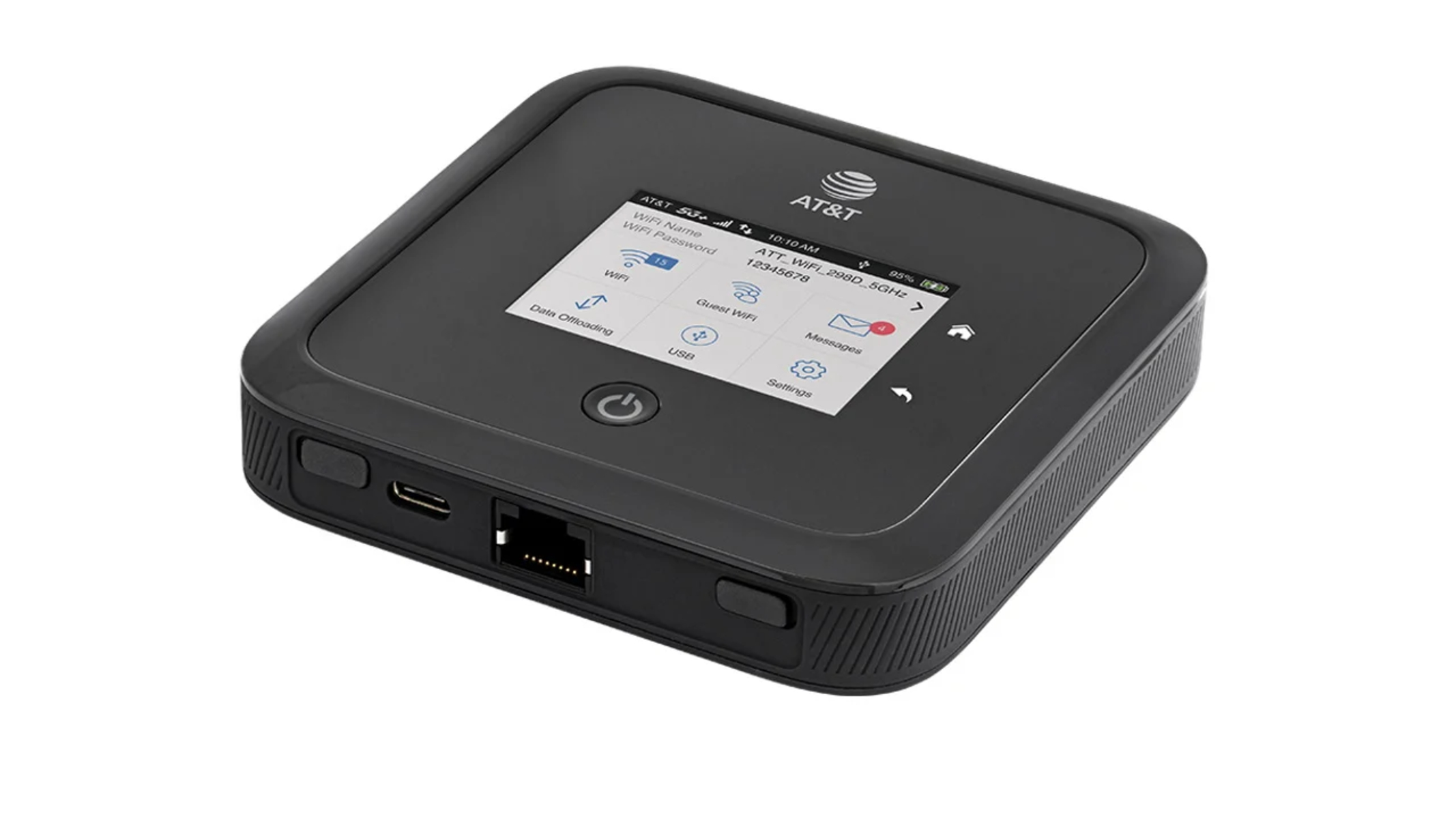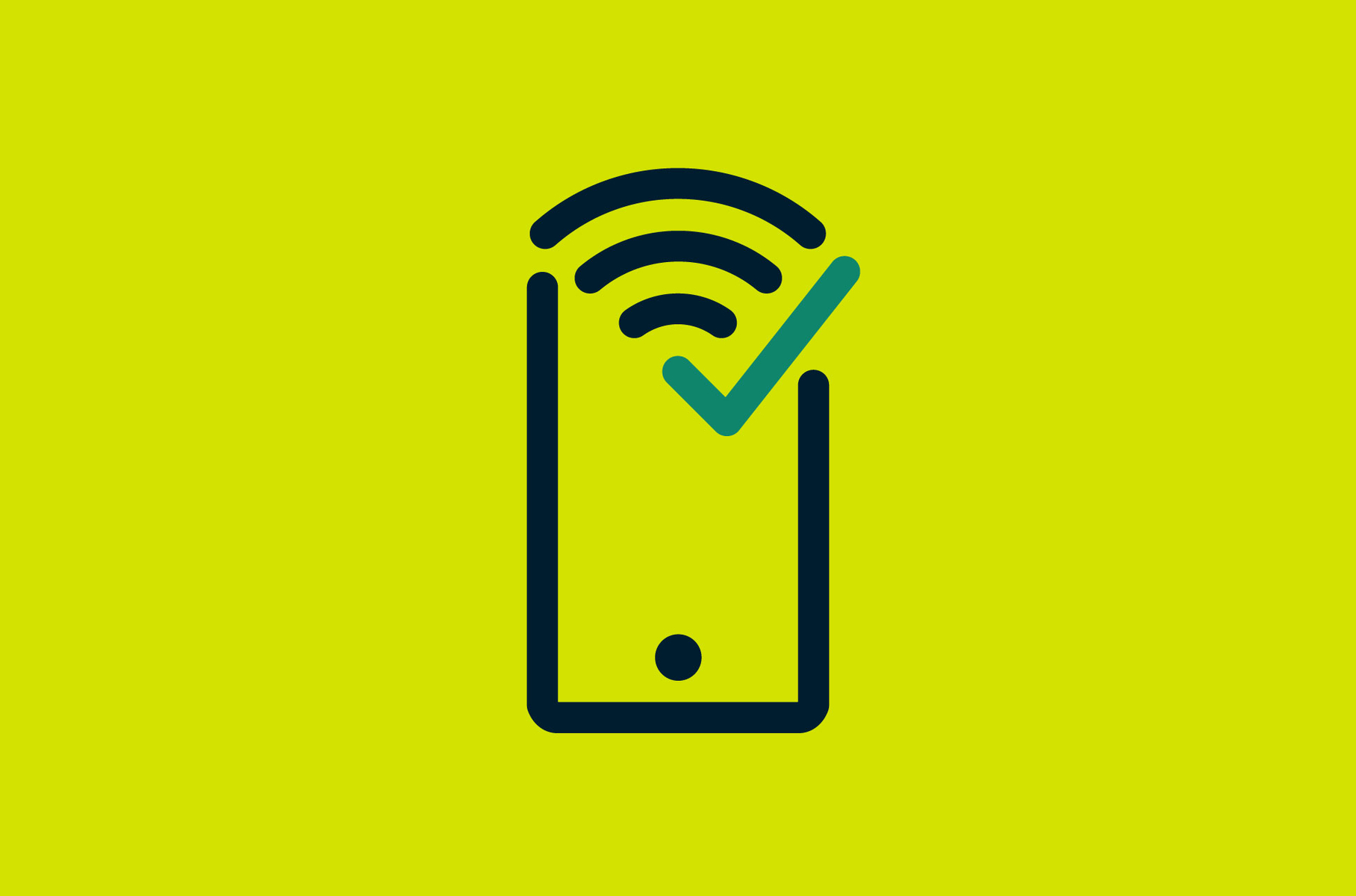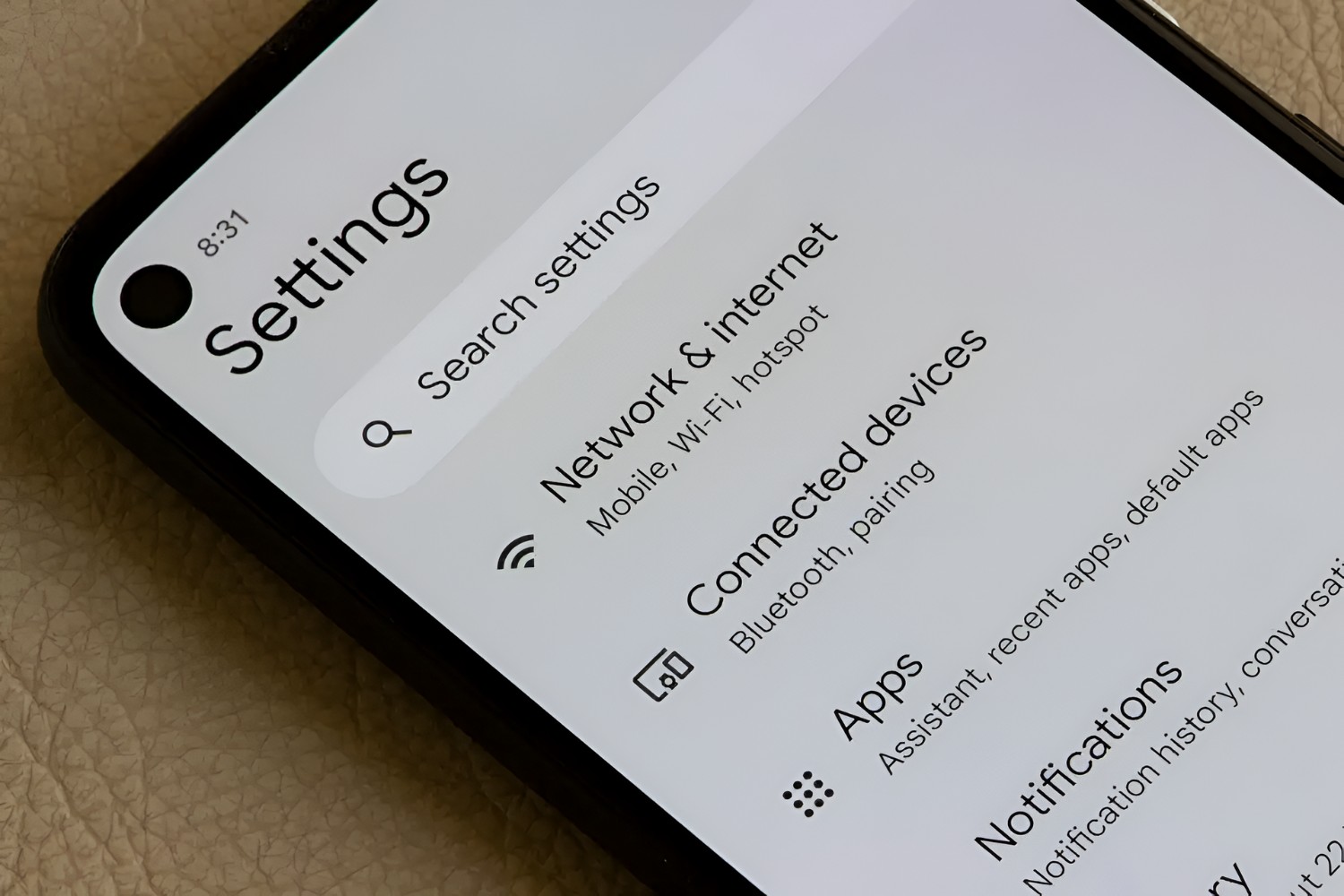Optimizing Wi-Fi Signal Strength
Ensuring a strong and stable Wi-Fi signal is crucial for maximizing the performance of your hotspot. By optimizing the Wi-Fi signal strength, you can enhance the overall connectivity experience for all connected devices. Here are some effective tips and tricks to achieve this:
-
Placement of the Hotspot: The placement of your hotspot plays a pivotal role in optimizing Wi-Fi signal strength. Position it in a central location within your home or workspace to ensure equal coverage in all areas. Avoid placing it near obstructions or in enclosed spaces, as this can hinder the signal propagation.
-
Antenna Orientation: If your hotspot device features external antennas, adjusting their orientation can significantly impact signal strength. Experiment with different angles to determine the optimal orientation for enhanced signal coverage.
-
Update Firmware and Drivers: Regularly updating the firmware of your hotspot device and the drivers of connected devices is essential for maintaining optimal performance. Manufacturers often release updates to address signal strength and connectivity issues, so staying up to date is crucial.
-
Utilize Signal Boosters or Wi-Fi Extenders: In scenarios where the Wi-Fi signal from the hotspot does not reach certain areas, consider using signal boosters or Wi-Fi extenders. These devices amplify the existing signal, extending its reach to cover dead zones and improve overall signal strength.
-
Opt for Quality Equipment: Investing in a high-quality hotspot device can significantly impact signal strength. Opt for a device with advanced antenna technology and robust signal amplification capabilities to ensure a strong and stable Wi-Fi connection.
By implementing these strategies, you can effectively optimize Wi-Fi signal strength, resulting in improved connectivity and a seamless online experience for all connected devices.
Choosing the Right Hotspot Device
Selecting the right hotspot device is a pivotal decision that directly influences the quality of your Wi-Fi connection. With a myriad of options available in the market, it's essential to consider various factors to ensure that the chosen hotspot device aligns with your specific requirements. Here's a comprehensive guide to help you navigate the process of choosing the ideal hotspot device:
Understanding Your Usage Needs
Before delving into the array of hotspot devices available, it's crucial to assess your usage needs. Consider the number of devices that will be connected to the hotspot simultaneously, the nature of online activities, and the expected data consumption. For instance, if you anticipate heavy usage with multiple devices streaming high-definition content, a high-performance hotspot device with robust bandwidth capabilities would be essential.
Evaluating Network Compatibility
When selecting a hotspot device, it's imperative to ensure compatibility with your preferred network provider. Different carriers operate on distinct network technologies, such as 4G LTE or 5G, and not all hotspot devices support every network type. Verify that the device you choose is compatible with the network frequencies and technologies offered by your preferred service provider to guarantee seamless connectivity.
Assessing Battery Life and Portability
For users who require mobility and flexibility, considering the battery life and portability of the hotspot device is paramount. Opt for a device with a long-lasting battery that can sustain continuous usage, especially during travel or in locations where access to power sources may be limited. Additionally, a compact and lightweight design enhances portability, allowing for convenient use on the go.
Examining Security Features
Security is a critical aspect of any wireless connection, and hotspot devices are no exception. Prioritize devices that offer robust security features such as WPA3 encryption, firewall protection, and the ability to create a secure guest network. These features safeguard your network from unauthorized access and potential security breaches, ensuring a safe and secure online experience.
Considering Advanced Features and Customization Options
Some hotspot devices offer advanced features and customization options that cater to specific user preferences. These may include customizable network settings, parental controls, integrated VPN support, and the ability to prioritize devices or applications for optimized bandwidth allocation. Assessing these features can help tailor the hotspot device to meet your unique connectivity requirements.
Seeking Reviews and Recommendations
Before making a final decision, it's beneficial to explore reviews and seek recommendations from trusted sources. User reviews, expert opinions, and recommendations from individuals with similar usage needs can provide valuable insights into the performance, reliability, and user experience of different hotspot devices.
By carefully considering these factors and conducting thorough research, you can make an informed decision when choosing the right hotspot device. Ultimately, selecting a device that aligns with your usage needs, offers compatibility with your network provider, prioritizes security, and potentially integrates advanced features will contribute to a robust and reliable Wi-Fi connectivity experience.
Updating Hotspot Firmware
Updating the firmware of your hotspot device is a fundamental step in maintaining optimal performance and addressing potential connectivity issues. Firmware serves as the underlying software that controls the functionality and behavior of the hardware components within the hotspot device. Manufacturers regularly release firmware updates to introduce improvements, address security vulnerabilities, and enhance overall performance. By ensuring that your hotspot device is running the latest firmware version, you can effectively optimize its functionality and mitigate potential connectivity challenges.
Firmware updates often include bug fixes that rectify known issues related to Wi-Fi connectivity, signal strength, and device stability. These fixes are essential for addressing intermittent connection drops, slow Wi-Fi speeds, and compatibility issues with various devices. Additionally, firmware updates may introduce optimizations that enhance the efficiency of the Wi-Fi radio and improve the overall signal propagation, resulting in a more robust and reliable wireless connection.
Moreover, manufacturers frequently release firmware updates to implement security patches that safeguard the hotspot device against emerging threats and vulnerabilities. These updates bolster the device's defenses against potential exploits and unauthorized access, ensuring a secure and protected Wi-Fi environment for all connected devices.
In some cases, firmware updates may also introduce new features and functionality, further enhancing the capabilities of the hotspot device. These additions could include improved network management options, enhanced customization settings, and additional security enhancements. By keeping the firmware up to date, users can take advantage of these new features, thereby enriching their overall Wi-Fi experience.
To update the firmware of your hotspot device, it is advisable to consult the manufacturer's official website or support resources. Manufacturers typically provide detailed instructions and downloadable firmware files, along with guidance on the update process. It is crucial to follow the provided instructions meticulously to ensure a seamless and successful firmware update without encountering any potential issues.
By prioritizing the regular update of your hotspot device's firmware, you can proactively optimize its performance, enhance security measures, and capitalize on new features and improvements. This proactive approach contributes to a more reliable and efficient Wi-Fi connectivity experience, ensuring that your hotspot device operates at its full potential.
Managing Connected Devices
Effectively managing the multitude of connected devices to your Wi-Fi hotspot is essential for maintaining optimal performance, minimizing potential conflicts, and ensuring equitable distribution of bandwidth. As the number of connected devices increases, the demand on the Wi-Fi network intensifies, necessitating strategic management to uphold a seamless connectivity experience for all users.
Understanding Device Prioritization
Prioritizing connected devices based on their usage requirements and bandwidth needs is a fundamental aspect of efficient device management. Devices utilized for high-bandwidth activities such as video streaming, online gaming, or video conferencing may benefit from priority access to the network to ensure uninterrupted and high-quality connectivity. By identifying and prioritizing such devices, users can allocate bandwidth resources effectively, enhancing the overall user experience.
Implementing Quality of Service (QoS) Settings
Quality of Service (QoS) settings allow users to allocate and prioritize bandwidth for specific applications, services, or devices. By configuring QoS settings on the hotspot device, users can ensure that critical applications receive the necessary bandwidth allocation, preventing network congestion and latency issues. This proactive approach to bandwidth management contributes to a more efficient and responsive Wi-Fi network, particularly in environments with diverse connectivity demands.
Monitoring and Managing Network Traffic
Utilizing network monitoring tools and management software enables users to gain insights into the traffic patterns and bandwidth utilization of connected devices. By monitoring network traffic, users can identify potential bandwidth hogs or problematic devices that may be impacting the overall network performance. This visibility empowers users to take proactive measures to optimize network resources and address potential connectivity issues.
Enforcing Device Limitations and Restrictions
In scenarios where network congestion or performance degradation is observed, enforcing device limitations and restrictions can be beneficial. This may involve setting limits on the number of connected devices or restricting access to specific bandwidth-intensive applications during peak usage periods. By imposing such limitations, users can mitigate network strain and ensure equitable access to Wi-Fi resources for all connected devices.
Leveraging Guest Network Features
Many hotspot devices offer the option to create a separate guest network, distinct from the primary network used for personal devices. Leveraging guest network features allows users to isolate guest devices, control their access privileges, and apply specific bandwidth restrictions. This segregation of guest devices helps maintain the performance of the primary network while accommodating guest connectivity needs.
By implementing these strategies, users can effectively manage the array of connected devices to their Wi-Fi hotspot, ensuring optimized performance, equitable bandwidth distribution, and a seamless connectivity experience for all users.
Utilizing Wi-Fi Extenders or Boosters
Wi-Fi extenders or boosters, also known as range extenders or repeaters, serve as invaluable tools for expanding the coverage and enhancing the signal strength of a Wi-Fi hotspot. These devices effectively address areas with weak or limited Wi-Fi coverage, commonly referred to as dead zones, by capturing the existing Wi-Fi signal and rebroadcasting it to extend its reach. By strategically deploying Wi-Fi extenders or boosters, users can overcome coverage limitations and ensure comprehensive connectivity throughout their desired environment.
The deployment of Wi-Fi extenders or boosters involves a straightforward setup process, typically requiring the device to be positioned within the range of the existing Wi-Fi signal. Once positioned, these devices capture the Wi-Fi signal and amplify it, effectively extending the coverage to encompass previously inaccessible areas. This amplified signal enables seamless connectivity for devices located within the extended range, mitigating the impact of dead zones and enhancing overall Wi-Fi accessibility.
When selecting Wi-Fi extenders or boosters, it is essential to consider factors such as compatibility with the existing Wi-Fi network, signal amplification capabilities, and the desired coverage range. Opting for devices that align with the frequency band and standards of the primary Wi-Fi network ensures seamless integration and efficient signal extension. Additionally, assessing the signal amplification capabilities of the extender or booster is crucial for achieving the desired coverage expansion without compromising signal strength.
Moreover, users can strategically position Wi-Fi extenders or boosters to maximize their effectiveness. Placement in areas where the existing Wi-Fi signal is strong yet capable of reaching dead zones is optimal. This strategic positioning facilitates the capture and amplification of a robust Wi-Fi signal, resulting in comprehensive coverage expansion and enhanced signal strength in previously underserved areas.
By leveraging Wi-Fi extenders or boosters, users can effectively eliminate dead zones, optimize signal strength, and ensure uniform connectivity across their desired environment. This proactive approach to Wi-Fi coverage expansion contributes to a seamless and reliable connectivity experience, empowering users to leverage their Wi-Fi hotspot to its full potential.
Minimizing Interference from Other Devices
Minimizing interference from other devices is crucial for optimizing the performance and stability of a Wi-Fi hotspot. Interference from neighboring Wi-Fi networks, electronic appliances, and other wireless devices can significantly impact signal quality and overall connectivity. By implementing strategic measures to mitigate interference, users can ensure a robust and reliable Wi-Fi experience.
One effective strategy for minimizing interference is to select the optimal Wi-Fi channel for the hotspot. Wi-Fi networks operate on different channels within the 2.4GHz frequency band, and selecting a channel with minimal interference from neighboring networks is essential. Utilizing Wi-Fi analysis tools or apps can provide insights into the channel utilization of nearby networks, enabling users to identify and switch to a less congested channel, thereby reducing interference and enhancing signal quality.
Furthermore, electronic devices such as microwave ovens, cordless phones, and Bluetooth-enabled gadgets can emit signals that interfere with Wi-Fi connectivity. Positioning the Wi-Fi hotspot away from such devices or relocating them to minimize their impact on the Wi-Fi signal can effectively reduce interference. Additionally, users can explore the option of upgrading to 5GHz-capable devices, as the 5GHz frequency band is less prone to interference from common household devices operating in the 2.4GHz range.
Employing advanced Wi-Fi routers equipped with beamforming technology can also mitigate interference by focusing the Wi-Fi signal directly towards connected devices, minimizing signal dispersion and susceptibility to external interference sources. This targeted signal transmission enhances signal strength and reduces the impact of interference, resulting in a more stable and reliable Wi-Fi connection.
Moreover, users can consider the deployment of Wi-Fi mesh systems, which utilize multiple access points strategically positioned throughout the environment to create a seamless and interference-resistant Wi-Fi network. These mesh systems intelligently manage signal distribution, adapt to changing interference patterns, and optimize connectivity, effectively minimizing the impact of external interference sources.
By proactively addressing interference from other devices through channel optimization, strategic positioning, technology upgrades, and the deployment of advanced Wi-Fi systems, users can significantly enhance the stability and performance of their Wi-Fi hotspot. This proactive approach ensures a reliable and interference-minimized Wi-Fi experience, empowering users to leverage their hotspot for seamless connectivity across all connected devices.
Utilizing 5GHz Frequency Band
The 5GHz frequency band represents a valuable asset in optimizing the performance and reliability of a Wi-Fi hotspot. By leveraging the 5GHz band, users can mitigate the impact of interference, enhance signal quality, and unlock the potential for higher data transfer rates, ultimately contributing to a more robust and seamless Wi-Fi connectivity experience.
One of the primary advantages of the 5GHz frequency band lies in its reduced susceptibility to interference from common household devices and neighboring Wi-Fi networks. Unlike the overcrowded 2.4GHz band, which is prone to congestion and interference, the 5GHz band offers a less congested and more reliable spectrum for Wi-Fi transmission. This reduced interference potential enables users to achieve more stable and consistent Wi-Fi connectivity, particularly in environments with multiple wireless devices and networks.
Furthermore, the 5GHz band supports a wider range of non-overlapping channels compared to the 2.4GHz band, providing greater flexibility in channel selection and allocation. This abundance of available channels allows users to optimize their Wi-Fi network by choosing channels with minimal interference, thereby enhancing signal quality and reducing the likelihood of performance degradation due to external interference sources.
In addition to mitigating interference, the 5GHz band facilitates higher data transfer rates, making it ideal for bandwidth-intensive activities such as HD video streaming, online gaming, and large file transfers. The increased bandwidth capacity of the 5GHz band enables users to capitalize on faster and more responsive Wi-Fi connectivity, delivering an enhanced user experience for data-intensive applications and activities.
It is important to note that while the 5GHz band offers numerous advantages, its coverage range may be slightly reduced compared to the 2.4GHz band, particularly in obstructed environments. However, this limitation can be effectively addressed by strategically positioning the Wi-Fi hotspot and utilizing additional access points or mesh systems to ensure comprehensive coverage while harnessing the benefits of the 5GHz frequency band.
By strategically incorporating the 5GHz frequency band into their Wi-Fi hotspot setup, users can optimize signal quality, minimize interference, and unlock the potential for higher data transfer rates, ultimately fostering a more reliable and efficient Wi-Fi connectivity experience for all connected devices.
Positioning the Hotspot for Maximum Coverage
Strategic positioning of the Wi-Fi hotspot is a critical factor in maximizing coverage and ensuring consistent connectivity across the desired area. By carefully selecting the placement of the hotspot device, users can optimize signal propagation, minimize coverage gaps, and create a comprehensive Wi-Fi environment that caters to the connectivity needs of all connected devices.
When positioning the hotspot, it is essential to consider factors such as the layout of the environment, potential obstructions, and the range of coverage required. Placing the hotspot in a central location within the environment facilitates equal signal distribution, minimizing the likelihood of coverage disparities and ensuring uniform connectivity throughout the area. Additionally, positioning the hotspot at an elevated location, such as a shelf or mounting it on a wall, can enhance signal propagation and extend coverage range, particularly in multi-story or large-scale environments.
Furthermore, users should aim to position the hotspot away from potential sources of interference, such as electronic appliances, metallic objects, or dense building materials that may impede signal transmission. By avoiding such obstructions and interference sources, users can optimize signal strength and minimize the impact of signal degradation, resulting in a more reliable and consistent Wi-Fi connection.
In scenarios where specific areas require enhanced coverage, users can strategically orient the antennas of the hotspot device to direct the Wi-Fi signal towards the desired locations. Adjustable external antennas, if available, provide flexibility in optimizing signal directionality, allowing users to fine-tune coverage to address specific connectivity needs.
Moreover, users can explore the option of deploying Wi-Fi range extenders or repeaters strategically throughout the environment to amplify and extend the coverage of the hotspot. These devices capture the existing Wi-Fi signal and rebroadcast it, effectively expanding the coverage range to encompass areas that may experience signal limitations, ultimately contributing to a more comprehensive Wi-Fi environment.
By meticulously considering the placement and orientation of the Wi-Fi hotspot, users can optimize signal coverage, minimize coverage gaps, and ensure seamless connectivity across the entire environment. This strategic approach to positioning the hotspot facilitates a robust and consistent Wi-Fi experience, empowering users to leverage their hotspot for reliable connectivity across all connected devices.

























